The Collison brothers and $1.75bn online payments start-up Stripe
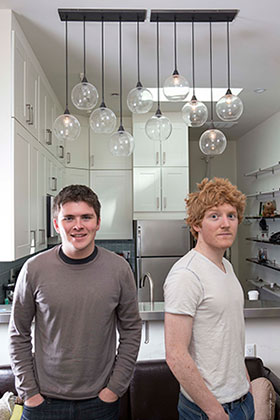
Roula Khalaf, Editor of the FT, selects her favourite stories in this weekly newsletter.
For two young founders of a billion-dollar start-up, the Collison brothers are remarkably self-effacing. Patrick and John grew up in a small hamlet outside the Irish city of Limerick in the 1990s and now live in a modest two-bedroom apartment in San Francisco’s fashionable Mission neighbourhood.
Along the way, they dropped out of Harvard (John) and MIT (Patrick), founded the start-up Auctomatic, sold it for $5m, and then in 2010 founded their current venture, Stripe, an online payments processing company recently valued at $1.75bn.
John, 23, stands in front of a living room wall against which dozens of books are stacked, and welcomes me to the apartment the brothers moved into about a year ago. “The caveat with all this is Patrick and I have not finished furnishing this place properly, which is why there’s that bag of random stuff and an Ikea desk and a bunch of fold-out chairs and what is actually outdoor furniture that we’ve been sitting on inside, and so I apologise for . . . ”
“ . . . for everything,” his older brother, Patrick, 25, interrupts.
A short entrance hallway leads past a largely untouched kitchen and into a small living area. The dark brown sofa is from Ikea, of 2010 vintage (“They don’t sell it any more,” says John. “It’s like hipster Ikea”). The brothers bought the two red leather bucket chairs from a local manufacturer, Heath Ceramics, having first admired them at a local coffee shop. Their bedrooms are located off to one side. On the other side is a sunroom with large windows letting in the Californian sunshine.
Developers and investors in Silicon Valley say Stripe is one of the hottest start-ups in a market full of hot start-ups. The product is designed for website and app developers and makes it easier for companies to accept payments online and via mobile apps. The payments processing market is expected to expand hugely as ecommerce, which at present accounts for only about 2 per cent of retail purchases globally, continues its fast growth. Stripe has begun shaking up the payments industry, largely dominated by PayPal whose cumbersome code and processes have long frustrated programmers.
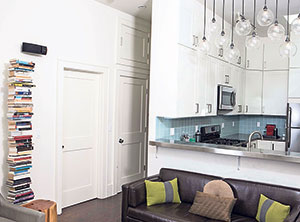
“In the short term, we want Stripe to enable more commerce online,” says Patrick. “When you think about how much we spend, or our cohort spends, and the direction the world is likely going to take, there’s at least a 10-fold gain possible. Why aren’t we there yet today? Part of it is the businesses haven’t been built yet and the web isn’t that old . . . but a lot of it is the infrastructure isn’t there yet.”
Building the payments infrastructure would allow, for example, a buyer in China to buy seamlessly from a seller in the UK, or a seller in the US to process a transaction from someone in Dubai. It would “enable the internet economy as a whole to be much more vibrant,” says Patrick. Google, Apple and Amazon have identified the same potential and are also working to develop the market.
When Patrick and John were children, their parents ran a small lakeside hotel in a village that had “nothing but mooing cows,” says Patrick. “I often wonder if it’s desirable to grow up somewhere boring because you’re forced to find your own interests,” says John. The pair of them got into programming as young teenagers, but in order to access the internet from their home, their parents had to get a special satellite connection set up. From there, they taught themselves how to code, spurred by brotherly rivalry: Patrick found a flaw in one of the projects his younger brother had built and hacked into it.
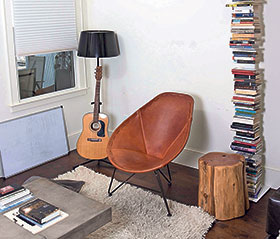
“I went to the bookstore on a Saturday, I bought a book about programming, and I started programming,” says Patrick. “I was literally building my first website – really getting into it – on the first day and I had no one to help me, which is a testament to how good this book was.”
They don’t have that book, PHP for the World Wide Web (2004) by Larry Ullman, in the apartment. However, last year they hired Ullman to work at Stripe helping customers build its code into their systems.
While the two brothers look to build on the success of Stripe, they are keen to avoid what is known in Silicon Valley as the cult of the founder, the obsessive fascination with industry figures such as Apple’s Steve Jobs, Microsoft’s Bill Gates, and Facebook’s Mark Zuckerberg.
“We were the first people to work on Stripe, and chronologically that’s interesting but so much of the great work that we do now, we’re a piece of it but we’re not the most important piece of it,” says Patrick.
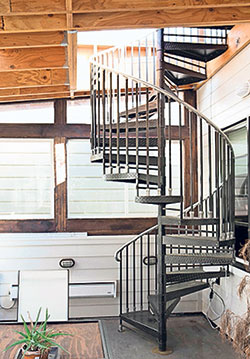
What the brothers have done with their apartment says a lot about how they try to shape the company. In one corner of the sunroom, a spiral staircase leads to an unfurnished roof space that they rarely use. In another corner, white mattresses are propped up against the wall ready for use by employees who need a place to stay when they are visiting San Francisco from Stripe’s UK or Australia offices or moving to the city to start work.
While John and Patrick admit that in many companies, employees would be unlikely to crash at their bosses’ home, they say they have tried to make the culture at Stripe friendly and egalitarian. Their web homepage does not list a hierarchy of employees but features a grid of headshots that is reshuffled randomly with every page reload. The brothers’ own descriptions do not mention the fact that they were the founders.
The Stripe office is a five-minute walk from their apartment in a low-rise building. The company’s previous office had been in a post-industrial area named Soma in the city centre. Soma is popular with many of the start-ups that have started moving from suburban Silicon Valley to San Francisco, but last year the brothers relocated both their office and their home to the Mission.
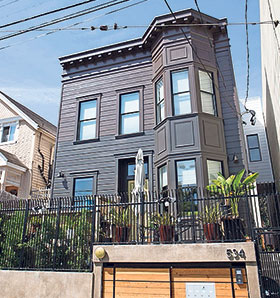
“I think Soma’s a really bad place, just to be subtle about it,” says Patrick. “It’s a neighbourhood designed around the car rather than the human and so the blocks are too big and there’s no shade and no activity on the street.”
The Mission, by contrast, is a largely residential area with a demographic that historically has been fairly low-income and heavily Hispanic. Pentecostal churches and taquerias still line many of the main commercial roads. To the frustration of some long-term residents, the area has started to change as young tech workers move into the area, attracted by the short commute into the city centre, the elegant Victorian-style row houses, and rents that are cheaper than more established parts of the city, at least until recently.
More than 30 of the 100 employees in Stripe’s San Francisco office live in or around the Mission, according to a map John recently tweeted. “One of the great perks of living in the city is the walkability,” he says.
Sarah Mishkin is the FT’s San Francisco correspondent
——————————————-
Favourite thing
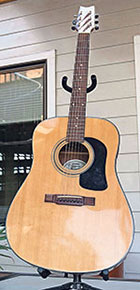
“Can my book collection be my favourite thing?” asks Patrick. If not, he says, it would be his bicycle.
John thinks for a bit and then points at a short, shellac-covered tree stump that is either a stool or a small table. “I’m not some super interior-designy person, as you can see, but I think that wooden tree thing is neat.” Patrick bursts out laughing at his little brother. “It’s like your pet rock,” he says.
John thinks again and opts instead for his guitar. He played the piano when younger, but owning one now would be difficult as the brothers move around a lot. Plus, he adds, they live in an apartment building. “A guitar is more neighbour-friendly,” he says.
Comments